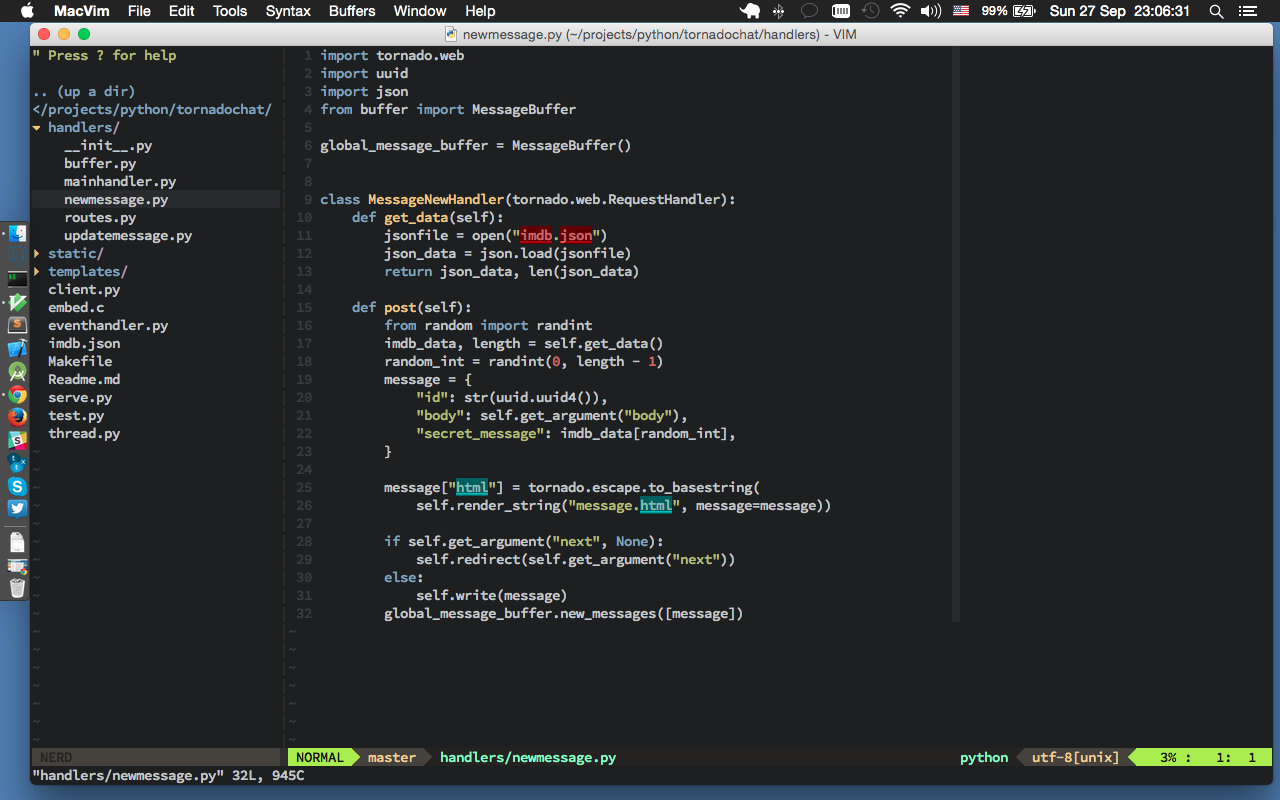

Type the following to install it:Ĭd ~/.vim/bundle & & \ git clone cd YouCompleteMe git submodule update -init -recursive. The best plugin I’ve found is called YouCompleteMe, which is compatible with basically all the most popular programming languages to date. We also want to have some auto complete options when developing our C/C++ programs. The next plugin to install is MiniBufExplorer, which will make our life easier when dealing with multiple files in Vim. To install it, just type:Ĭd ~/.vim/bundle & & \ git clone
#MACVIM GVIMR CODE#
Using Pathogen, we will install Syntastic, a wonderful plugin to identify errors in your code (linting) in the most popular programming languages. Mkdir -p ~/.vim/autoload ~/.vim/bundle curl > ~/.vim/autoload/pathogen.vim We will start with Pathogen, a script to make the installation of other scripts extremely easy. There’s a comment for the most important commands, so that you can understand what these lines do if you are interested. You might see a blank file if you have never edited Vim’s configuration before. Therefore, type vim ~/.vimrc to start editing your configuration. The Vim (or MacVim) configuration file is located in ~/.vimrc. Vim is highly configurable, but here I will describe what I believe is the most useful setup for new users and C/C++ developers. The rest of the instructions work for Vim and MacVim, so I will use Vim to refer to both (simply replace vim for mvim if you want to use MacVim). Now that you have Vim (and/or MacVim) installed in your system, the next thing you should do is to set it up to adapt it to your needs. Now you should be able to start a new document with MacVim by typing:.Like this (you will have to enter your machine password): Copy the mvim binary to your PATH so that you can open MacVim from any directory in your computer.




 0 kommentar(er)
0 kommentar(er)
